Washing Craft Felt for Letterman Patches
Felt is a fascinating material from its long history to the unconventional way of how it’s made, and to all the possibilities for its use! Felt is a unique fabric and as such, ordinary methods of cleaning it when it gets dirty simply won’t do. From the synthetic fibres of our Acrylic craft felt to our 100% Wool craft felt, this material requires extra special care when cleaning it. We’ve received a lot of questions as to how to go about doing this, especially when the felt is attached to a garment or object such as a varsity jacket or a plushie. With this educational blog post, we’ve taken the guess work out of it and put our craft felts to the test!
The Dos and Don'ts of Washing Felt
This post will show you some of the very worst case washing scenarios to the best with recommendations when it comes to cleaning it. We tested our four types of craft felts: Acrylic, Rayon/Viscose, Premium Wool Blend, and 100% Wool craft felt in six different washing machine cycles with three different water temperatures, one hand-washing test, one air-dry test, and three different dryer cycles on two different heat settings. In the following wash and dry experiments, stitched felt patches and stuffed felt cushions were used to simulate results on what washing a garment with craft felt embellishments and/or what a stuffed plushie would result in. Below we outline the results of four of the tests we did. For the full report on our findings, please see our downloadable PDF at the end of this blog post!
-
Test 1: Worst Case Scenario
Machine Wash – normal cycle, hot water. Followed by machine dry for 30 minutes on high heat. -
Test 2: Better, Not Ideal
Machine Wash – normal cycle, cold water. Followed by an air dry. -
Test 3: Even Better
Machine Wash – delicate cycle, cold water. Followed by an air dry. -
Test 4: Best Case Scenario
Hand Wash – cold water. Followed by an air dry.
Machine Wash – normal cycle, hot water. Followed by machine dry for 30 minutes on high heat.
Let’s say you’ve thrown your beloved varsity jacket or handmade felt plushie in with the rest of your regular laundry without noticing, or simply didn’t know the first thing about the nature of felt! The first thing you would notice is the shrinking of the material and the resulting distortion of the fabric around it. Because the felt is subject to high heat and moisture from the hot water as well as agitation from the motion of the washing machine including being tossed against the rest of your laundry, it is actually being felted further.
As you may know, felting is the process of wool or synthetic fibres or a blend of wool and synthetic fibres being tangled and hooked together by way of those three things: heat, moisture, and friction. As your felt item is being exposed to this process again, the fibres in the felt move together even closer, resulting in the shrinkage that causes irreversible changes to the appearance. Shrinking will lead to:
- Warped or lumpy surfaces
- Rippled edges
- Distorted stitching
- Pulling in of any fabric it is sewn to
- Curling edges
Let’s take a look and see what happened to our felt test subjects on this most worst-case scenario for a felt item:
Acrylic Felt
Both the Acrylic felt stitched patch and the stuffed cushion saw shrinkage of about - 1/4", resulting in a bit of rippling along the edges of the stitched patch and some puckering along the stitches of the cushion.
The agitation of the fibres against the rest of the laundry load caused some pilling to appear on both test subjects. Pilling is the balling up of fibres from repeated friction on the surface. This same friction also led to the surface of the Acrylic felt to become fluffier and softer (a plus perhaps?) and the edges to become rounded and a bit wispy.
While it did not look 100% alike to what it was before it went in the machine cycles, it wasn’t catastrophically terrible. All in all, the synthetic make-up of the Acrylic felt led to its survival against the worst possible cycle a felt could go through. However, we strongly do not recommend repeated washes and dries on high temperatures.
Machine Wash – normal cycle, hot water. Followed by machine dry for 30 minutes on high heat.
 Before: Acrylic Felt Stitched Patch
Before: Acrylic Felt Stitched Patch After: Acrylic Felt Stitched Patch
After: Acrylic Felt Stitched Patch Before: Acrylic Felt Stuffed Cushion
Before: Acrylic Felt Stuffed Cushion After: Acrylic Felt Stuffed Cushion
After: Acrylic Felt Stuffed CushionRayon/Viscose Felt
The Rayon/Viscose felt clearly did not respond well to the washing machine torture test. While the cushion only shrank by - 1/4" on one side and about - 3/4" on the other side, the black and blue graduation cap patch shrank significantly by more than an inch - the most out of all felt types! As well, the surface of one side of the cushion saw severe pilling that can be pulled away from the surface quite easily. Like the Acrylic, the shrinking led to the puckering and distortion of stitches on both the cushion and patch. Finally, on the patch, the fibres were very fuzzy/frizzy all over the surface.
In short: Rayon/Viscose did not survive this most severe wash cycle.
Machine Wash – normal cycle, hot water. Followed by machine dry for 30 minutes on high heat.
 Before: Rayon/Viscose Felt Stitched Patch
Before: Rayon/Viscose Felt Stitched Patch After: Rayon/Viscose Felt Stitched Patch
After: Rayon/Viscose Felt Stitched Patch Before: Rayon/Viscose Felt Stuffed Cushion
Before: Rayon/Viscose Felt Stuffed Cushion After: Rayon/Viscose Felt Stuffed Cushion
After: Rayon/Viscose Felt Stuffed CushionPremium Wool Blend Felt
The Premium Wool Blend felt cushion saw similar pilling as Rayon/Viscose happening on both sides, however this time the pilling was not the most severe effect; it was the shrinkage. The lovely little square pillow, turned into a rounded puff ball! The stitches pulled in and shrank drastically at the corners, shrinking up to - 3/4" around. Again, similar to the Rayon/Viscose stitched patch, our yellow and green graduation cap shrank dramatically, resulting in an extremely lumpy surface with fibres of the two colors shedding and mixing all over the surface and frizzing up all over.
Take it from us: This Premium Wool Blend felt does not survive a hot water machine wash!
Machine Wash – normal cycle, hot water. Followed by machine dry for 30 minutes on high heat.
 Before: Premium Wool Blend Felt Stitched Patch
Before: Premium Wool Blend Felt Stitched Patch After: Premium Wool Blend Felt Stitched Patch
After: Premium Wool Blend Felt Stitched Patch Before: Premium Wool Blend Felt Stuffed Cushion
Before: Premium Wool Blend Felt Stuffed Cushion After: Premium Wool Blend Felt Stuffed Cushion
After: Premium Wool Blend Felt Stuffed Cushion100% Wool Craft Felt
Some surprising results on these samples! The 100% Wool craft felt seems to have resisted pilling on the surface, but looks more fluffy as the fibres have been agitated, thus losing the clean cut edges in the case of the stitched patch. We can see that these samples did in fact shrink (up to an inch on the patch and up to - 3/4" inch on the cushion), noting the puckered stitching on the cushion and the smaller size of the purple graduation cap patch. One might’ve predicted that the 100% Wool would’ve fared the worse on this test, however the results show that while it came out looking like it’s seen much better days, it seemed to at least hold up its shape and surface appearance. However, we can only imagine in horror what these might look like if thrown into a second hot wash.
Machine Wash – normal cycle, hot water. Followed by machine dry for 30 minutes on high heat.
 Before: 100% Wool Felt Stitched Patch
Before: 100% Wool Felt Stitched Patch After: 100% Wool Felt Stitched Patch
After: 100% Wool Felt Stitched Patch Before: 100% Wool Felt Stuffed Cushion
Before: 100% Wool Felt Stuffed Cushion After: 100% Wool Felt Stuffed Cushion
After: 100% Wool Felt Stuffed CushionMachine Wash – normal cycle, cold water. Followed by an air dry.
So, we’ve learned felt does not like hot water (or warm for that matter)! Well then, it should be fine if we just change the water to cold, right? While that does mean the felt stands a better chance against shrinking, the aggressiveness of a washing machine on a normal cycle still leads to a felt that looked better before it went in. Followed by using the gentlest method of drying, this cleaning procedure would be better for your felt, but still not ideal. The results of this test showed variations between the types of felt, so let’s get down to the nitty gritty!
Acrylic Felt
Success! The Acrylic resisted shrinking due to the lack of heat in the equation! However, the sample did get some pilling happening along the edges. The felt feels softer to the touch due to friction even though it was in a load with less contents. The edges along the yellow background shape appear to have remained crisp and neat, while the red shape looks a bit fuzzier along the edges. From our results we can say the cold wash is not immensely harmful to your acrylic felt if you don’t mind picking off the little balls of fibres that might form, though be sure not to put it in the dryer on high heat afterwards.
Machine Wash – normal cycle, cold water. Followed by an air dry.
 Before: Acrylic Felt Stitched Patch
Before: Acrylic Felt Stitched Patch After: Acrylic Felt Stitched Patch
After: Acrylic Felt Stitched PatchRayon/Viscose Felt
A much better result than the black and blue graduation cap of the previous test. This felt sample is sewn onto a canvas fabric backing to simulate a patch on a garment. This backing has reinforced the felt shape to resist shrinking, although can still be pulled in and distorted from shrinking that does happen (seen from results of other warmer temp tests we conducted). Additionally, the backing does not protect against surface deterioration. In this case we can see that the edges of the Letterman patch have lost their crisp, fresh-cut appearance. They have become rounded, fluffy, and actually lifted up a bit, slightly obscuring the stitching along the top. Lastly, we noticed the Rayon/Viscose bled purple onto the canvas. This lightened after drying but this happened on almost all of our Rayon/Viscose test samples.
Machine Wash – normal cycle, cold water. Followed by an air dry.
 Before: Rayon/Viscose Felt Stitched Patch
Before: Rayon/Viscose Felt Stitched Patch After: Rayon/Viscose Felt Stitched Patch
After: Rayon/Viscose Felt Stitched PatchPremium Wool Blend Felt
We see similar results to the Rayon/Viscose with this test sample. Both the Rayon/Viscose and the Premium Wool Blend have long fibres that form a sort of swirly surface pattern when felted, so those longer fibres on the surface are more susceptible to pulling away and being distorted from that pattern. After our Premium Wool Blend went through the cold wash, we can see that the original surface pattern has been maintained but is now fluffier and the fibres are easy to pull away. Also, just like our Rayon/Viscose, the edges have become rounded, fluffy, and look worn. They also lift up along the top and obscure the stitching. Lastly, we noticed some minimal bubbling on the reverse side of the canvas backing, indicating shrinking.
Machine Wash – normal cycle, cold water. Followed by an air dry.
 Before: Premium Wool Blend Felt Stitched Patch
Before: Premium Wool Blend Felt Stitched Patch After: Premium Wool Blend Felt Stitched Patch
After: Premium Wool Blend Felt Stitched Patch100% Wool Craft Felt
Again, our 100% Wool delivering surprising results! This isn’t to say you should always put 100% Wool in the washing machine, but it’s nice to see just how much this felt can withstand (at least on a one-time basis). This felt did not pill or have its surface appearance change dramatically like the previous two types of felt. Due to a shorter and more finely felted fibre, everything remains nice and close together. Unfortunately, this sample did experience some shrinking, resulting in rippling of the fabric backing that can be seen on both the front and the back. Also, the top edge does seem to be curling up and over the top stitch like the previous two samples.
Machine Wash – normal cycle, cold water. Followed by an air dry.
 Before: 100% Wool Felt Stitched Patch
Before: 100% Wool Felt Stitched Patch After: 100% Wool Felt Stitched Patch
After: 100% Wool Felt Stitched PatchMachine Wash – delicate cycle, cold water. Followed by an air dry.
Now we come to the part of the blog post where we will be going over the results of more ideal washing methods for felt. Delicate cycles are named as such because of their lower spin speed. It’s less aggressive on delicate materials such as felt and simulates a hand-wash; although an aggressive one compared to a real hand-wash, which we will cover shortly. If your washing machine can customize cycles, we recommend setting the spin speed to the lowest setting if the felt item is dirty enough for a machine wash. This reduces the friction portion of what contributes to felt shrinking; remember, shrinking happens because the fibres are being felted closer together. Since we cannot remove the moisture from the water out of the equation, the best we can do is to remove the heat by using cold water and reduce friction as much as possible by using lower spin speeds or by hand-washing.
Acrylic Felt
After a delicate cycle, the Acrylic is not only clean, but it looks exactly as it did when it went in. Our findings indicate: no pilling, no shrinking, no color bleeding or transfer, no loss of crisp edges, no distortion of fabric backing or stitching, and wonderfully no disturbance of the surface fibres. The felt feels the same as a piece that did not go through any cleaning procedures. Yet again, our Acrylic proves itself sturdy against washing machines. We suggest using this type of felt for any projects that will need machine washing once completed such as for toys, decorations, or other crafts.
Machine Wash – delicate cycle, cold water. Followed by an air dry.
 Before: Acrylic Felt Stitched Patch
Before: Acrylic Felt Stitched Patch After: Acrylic Felt Stitched Patch
After: Acrylic Felt Stitched PatchRayon/Viscose Felt
The Rayon/Viscose in purple sure does like to bleed color! This result was consistent with the other Rayon/Viscose test samples so it would be a good idea to spot test with a scrap or inconspicuous piece of the felt if this is the type of felt you have to clean. We can also see that although we had the washing machine set to a slow spin speed, the friction still fuzzed up the edges. Within the shape, the fibres also fuzzed up and felted the surface fibres a bit closer together. As for shrinking, we can see that the fabric backing is bit rippled in the centre.
Machine Wash – delicate cycle, cold water. Followed by an air dry.
 Before: Rayon/Viscose Felt Stitched Patch
Before: Rayon/Viscose Felt Stitched Patch After: Rayon/Viscose Felt Stitched Patch
After: Rayon/Viscose Felt Stitched PatchPremium Wool Blend Felt
Here we see that the swirly fibre pattern of the longer fibred Premium Wool Blend is beautifully preserved and undisturbed. Unfortunately, that is not the case for the edges as they have lifted – but only a little. The reverse side of the denim backing reveals no shrinking – yay! If you happen to see raised edges on your felt after a delicate cold wash, like our sample here, you can try to press the edges back down with your finger or by ironing it carefully.
Machine Wash – delicate cycle, cold water. Followed by an air dry.
 Before: Premium Wool Blend Felt Stitched Patch
Before: Premium Wool Blend Felt Stitched Patch After: Premium Wool Blend Felt Stitched Patch
After: Premium Wool Blend Felt Stitched Patch100% Wool Craft Felt
This felt patch looks really good coming out of the delicate cycle. Despite being 100% Wool and susceptible to damage from improper washing, the quality of this felt lives up to its name. Here we see virtually no changes! Like the Acrylic in this round of testing, the 100% Wool showed no pilling, no disturbance of surface fibres or fibres along the edges, no colour loss, not even any shrinking. The only change noted is that the resulting patch feels a bit softer. Washing 100% Wool on delicate in cold water and then air dried is indeed an option for an item that needs some tender loving care.
Machine Wash – delicate cycle, cold water. Followed by an air dry.
 Before: 100% Wool Felt Stitched Patch
Before: 100% Wool Felt Stitched Patch After: 100% Wool Felt Stitched Patch
After: 100% Wool Felt Stitched PatchHand Wash – cold water. Followed by an air dry.
A good old-fashioned wash-by-hand in the sink, bathtub, or any large enough container is always the best option for something that is already frail, old, damaged, or even unfamiliar (unknown fibre content for example). This is because you control everything in this scenario: the water temperature, the water level and how vigorously you clean the object. This scenario was a win for all four types of felt because we were able to care for and preserve the delicate surface fibres during the wash by rubbing gently with only our hands. Let’s take a look to see how each felt received the hand wash.
Acrylic Felt
This felt has been holding up against all of the tests thus far and so, came out looking the same! The only difference is that the surface feels slightly softer; likely a result of the laundry detergent. No pilling to be found, absolutely zero shrinking, colour bleeding or fuzzing up of any fibres on the surface or edges. A complete success!
Hand Wash – cold water. Followed by an air dry.
 Before: Acrylic Felt Stitched Patch
Before: Acrylic Felt Stitched Patch After: Acrylic Felt Stitched Patch
After: Acrylic Felt Stitched PatchRayon/Viscose Felt
A near perfect dismount for our fussy Rayon/Viscose! The purple colour did still bleed in the hand wash unfortunately but dried to a much lighter almost unnoticeable colour. We saw absolutely no shrinking in this sample, leaving the fabric backing laying perfectly flat. The fibres did fuzz up and become rounded along the edges only very slightly, which is to be expected at this point with this felt. The fibres are very delicate and don’t take much to move around. This felt is best cleaned with this method and air dried, with careful attention paid to keep the fibres in place.
Hand Wash – cold water. Followed by an air dry.
 Before: Rayon/Viscose Felt Stitched Patch
Before: Rayon/Viscose Felt Stitched Patch After: Rayon/Viscose Felt Stitched Patch
After: Rayon/Viscose Felt Stitched PatchPremium Wool Blend Felt
The Premium Wool Blend behaves in a similar way to Rayon/Viscose as we have been pointing out so far. This resulting sample shows this too with slightly more success. We don’t see any shrinking whatsoever, the edges are laying flat but have become a tad fluffy. The swirly fibre pattern remains on display and under touch stays in place. It’s a great result to see for another type of felt that has proven to be quite delicate.
Hand Wash – cold water. Followed by an air dry.
 Before: Premium Wool Blend Felt Stitched Patch
Before: Premium Wool Blend Felt Stitched Patch After: Premium Wool Blend Felt Stitched Patch
After: Premium Wool Blend Felt Stitched Patch100% Wool Craft Felt
The patch looks pretty much the same! There is no pilling, shrinking, colour loss, or disturbance of surface fibres. The edges have become slightly fuzzy but they still look crisp and clean. The surface even feels the same. The edges also have not lifted or begun curling. The 100% wool agrees fully with the cold water hand wash!
Hand Wash – cold water. Followed by an air dry.
 Before: 100% Wool Felt Stitched Patch
Before: 100% Wool Felt Stitched Patch After: 100% Wool Felt Stitched Patch
After: 100% Wool Felt Stitched PatchThat concludes our washing machine experiment extravaganza! If you’ve made it this far, you’ve learned that a lot can go wrong when trying to wash felt. However, by removing only two things from the mix (heat and friction) you can give your felt a much better fighting chance to a long, happy, clean life of being the felt object you want it to be!
Note: This was a condensed version of our full regimen of testing in order to make for an easier and more enjoyable reading experience, but if you want to see all the results, please check out the full PDF of data below!
We invite you to share your thoughts on this process, questions, comments or tips and tricks. Don’t forget to show off your creations with #thefeltstore on social media. We love seeing the creations our customers come up with.
If you have any questions regarding a specific product used in this article, please contact a Customer Service Representative by emailing sales@thefeltstore.com or calling 1-866-757-3358.
 USA
USA CANADA
CANADA EUROPE
EUROPE
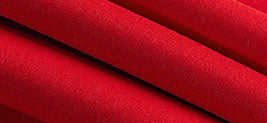
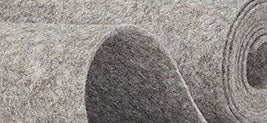

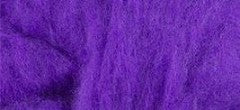
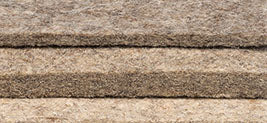

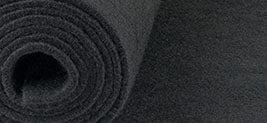
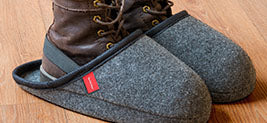
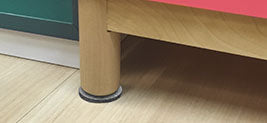
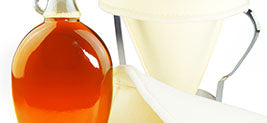
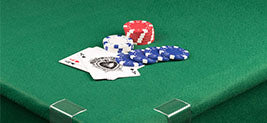
Leave a comment